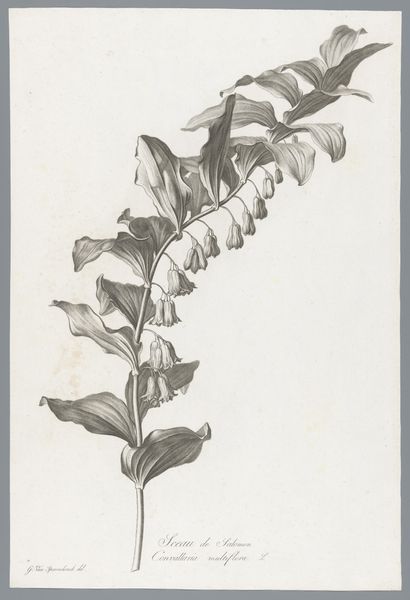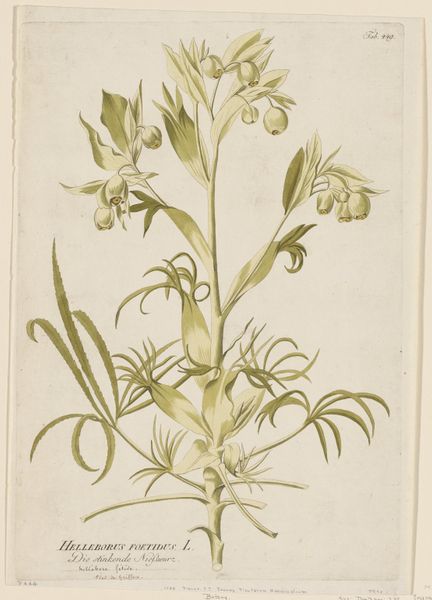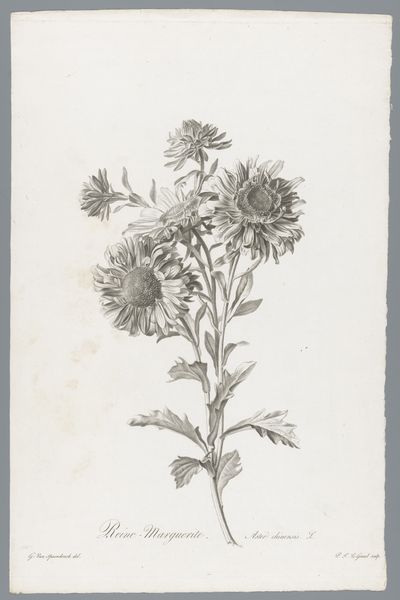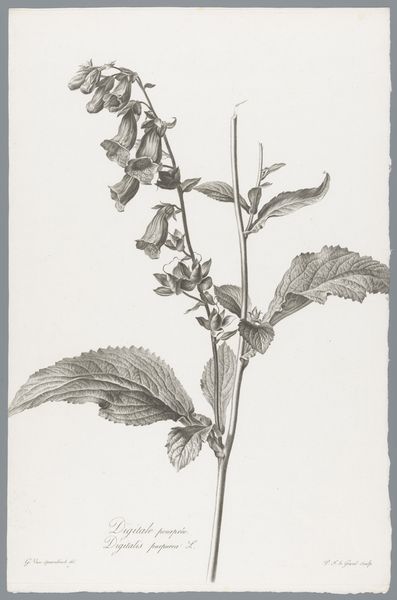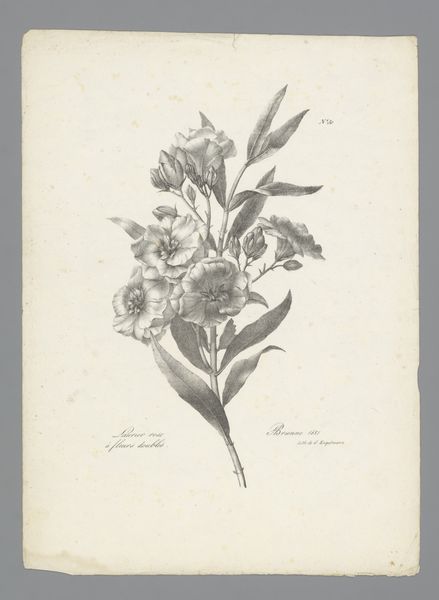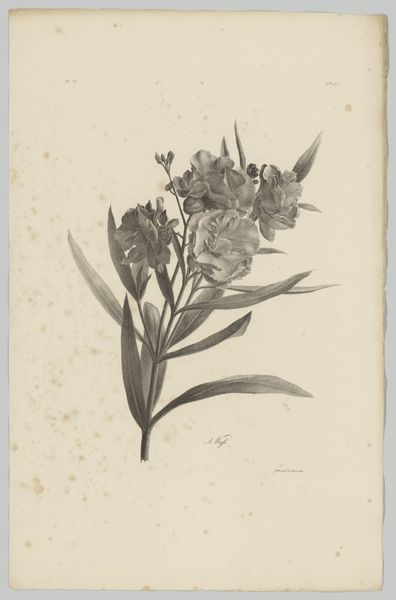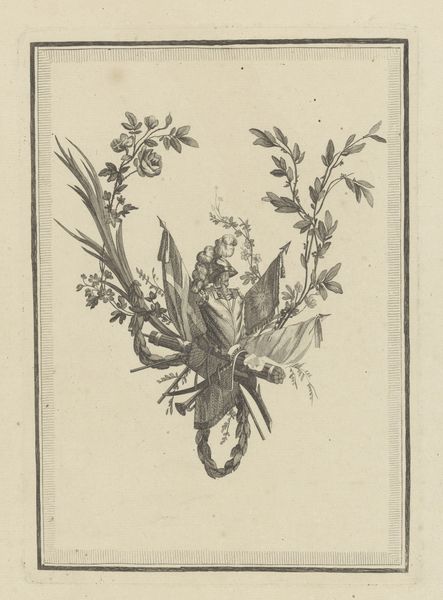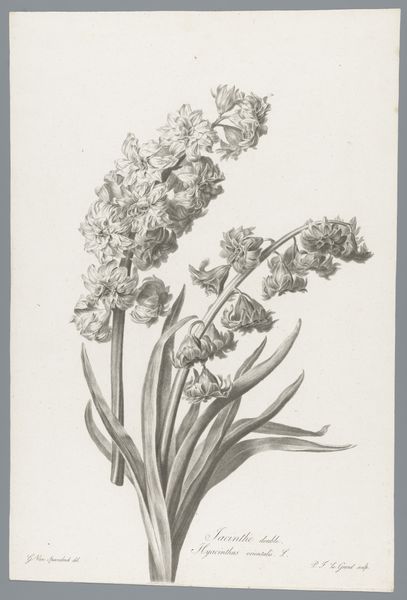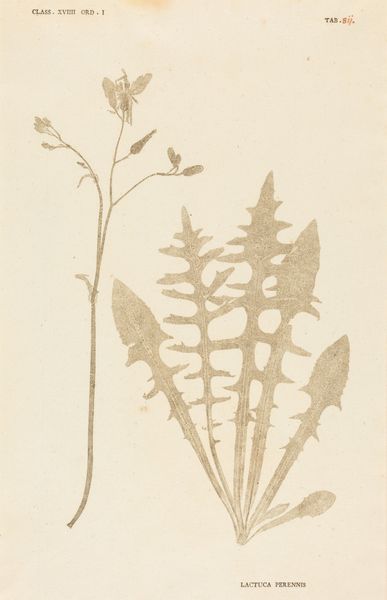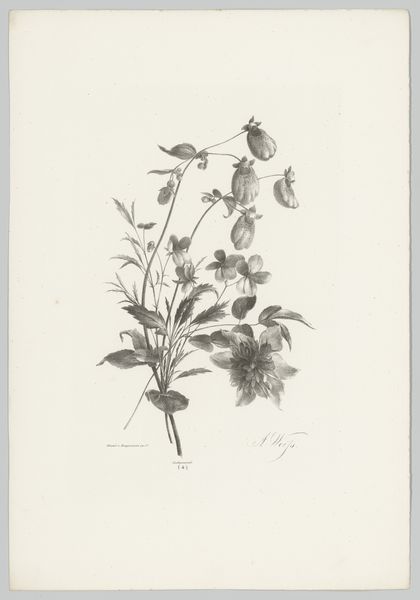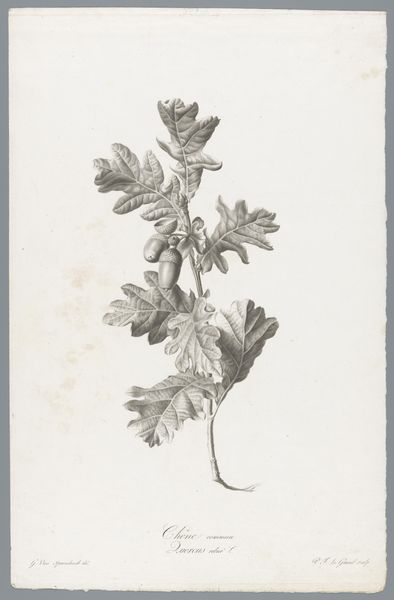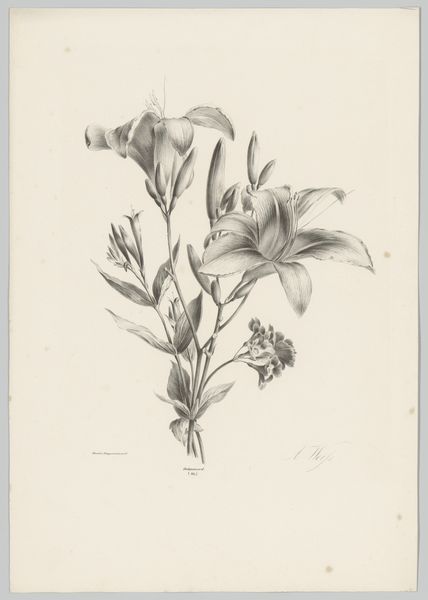
drawing, print, etching, paper, ink
#
drawing
#
organic
#
ink paper printed
# print
#
etching
#
flower
#
figuration
#
paper
#
organic drawing style
#
ink
#
ink drawing experimentation
#
romanticism
#
botanical drawing
#
sketchbook drawing
#
botanical art
#
watercolor
Dimensions: height 486 mm, width 331 mm
Copyright: Rijks Museum: Open Domain
Curator: What a subtly striking image. This is "Grote leeuwenbek," or "Great Snapdragon," created between 1799 and 1801 by Pierre François Legrand. It’s a print, combining etching and ink on paper. Editor: The grayscale gives it such a hushed, almost reverent quality. It’s delicate, yet there’s a sharp precision in the lines. What's most striking is the artist's attention to detail; even the texture of the paper contributes to its understated elegance. Curator: Precisely. Legrand has managed to capture both botanical accuracy and artistic expression. The varying line weights create a sense of depth, guiding the eye through the organic forms. Observe how the artist uses hatching and cross-hatching to model the petals and leaves. This suggests volume. The plant is not just depicted but sculpted on the page. Editor: Snapdragons, though... aren’t they often associated with deception, even spells, given the face-like form of the flower? There’s a curious tension here. It's seemingly a simple study, yet it hints at something more arcane through this cultural reading. The muted tones perhaps emphasize this secretive quality. Curator: An interesting point! Symbolism aside, consider how the Romantic era celebrated the sublime found in nature. Legrand may have wanted to communicate the aesthetic delight one can find in botany and flora itself. The plant dominates the picture plane; consider that a conscious decision to put the "great snapdragon" above any earthly drama, elevated by observation. Editor: Even the meticulous detail suggests more than pure scientific record. Botanical illustration was developing as a means of exploring cultural attitudes towards nature and power; this period also overlapped with intensifying European colonialism. Curator: And you posit the Snapdragon here mirrors a deeper narrative? Perhaps, but ultimately the picture invites contemplation on visual aesthetics and how line, form, and balance coalesce in Romantic ideals. Editor: Yes, a layered appreciation. Seeing the botanical accuracy interwoven with, maybe, deeper allegories allows the viewer to uncover even a richer appreciation of it. It's far from just a drawing of a flower; there's more magic to be revealed.
Comments
No comments
Be the first to comment and join the conversation on the ultimate creative platform.
